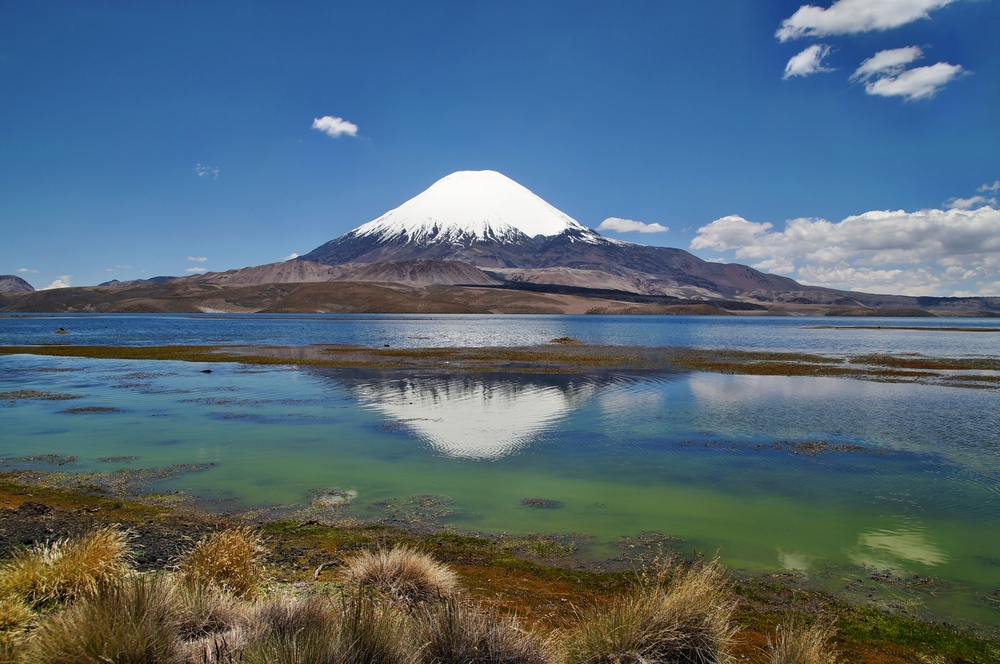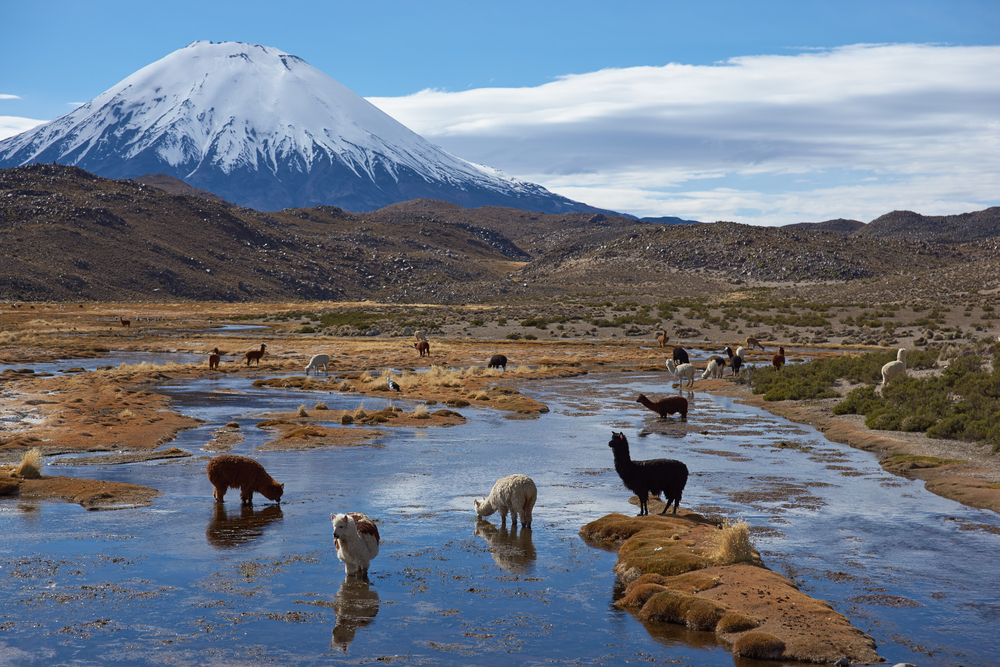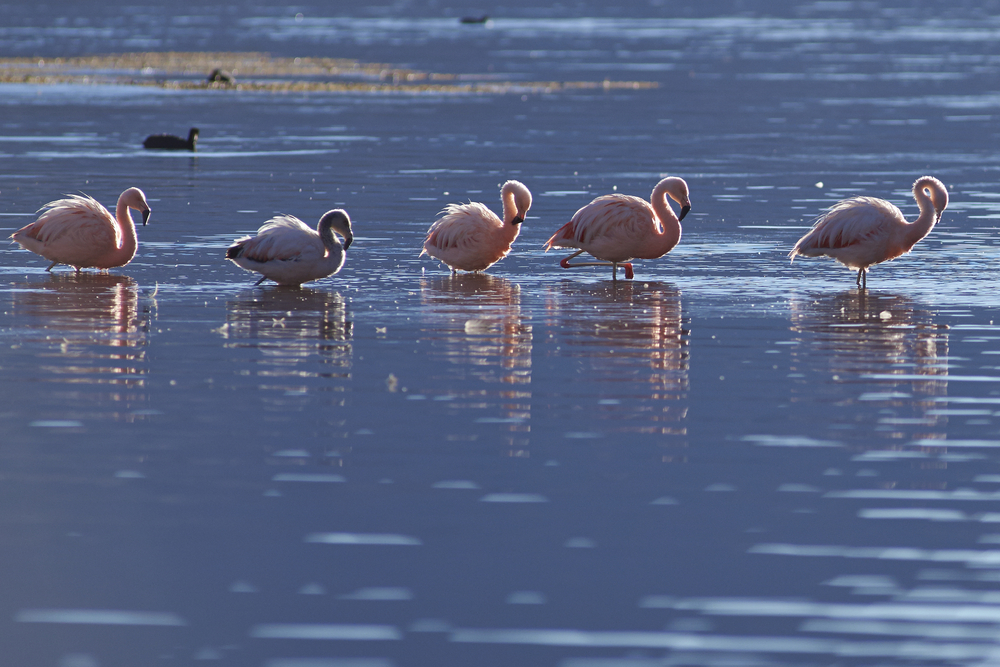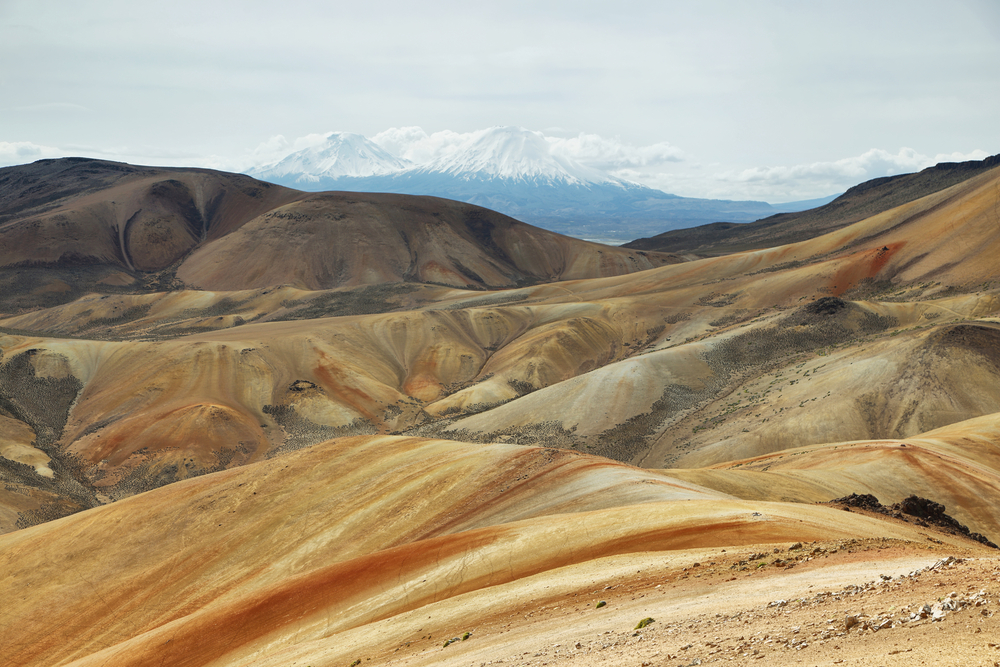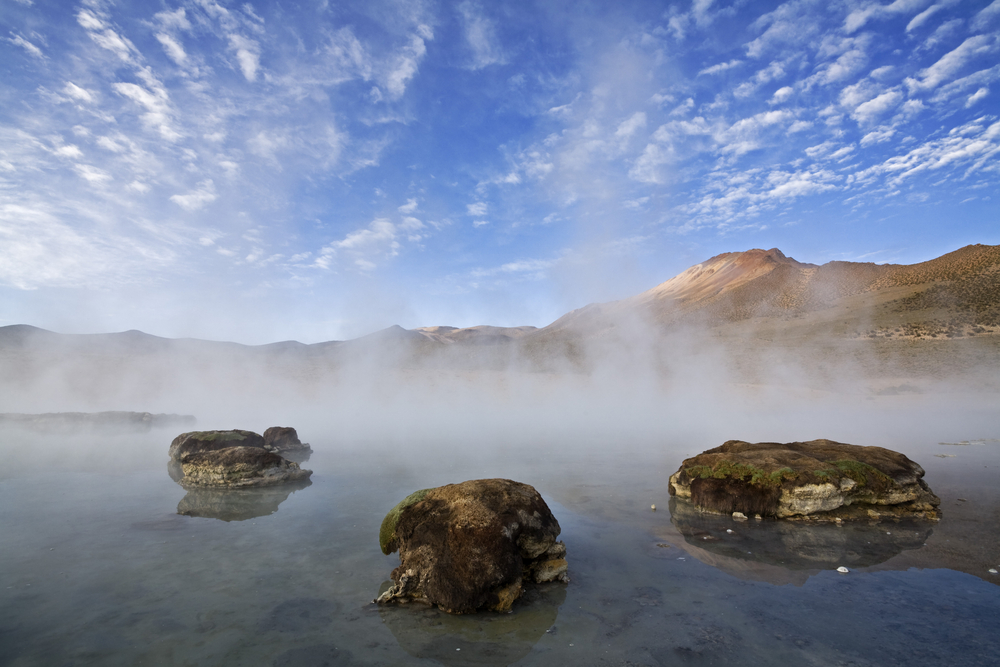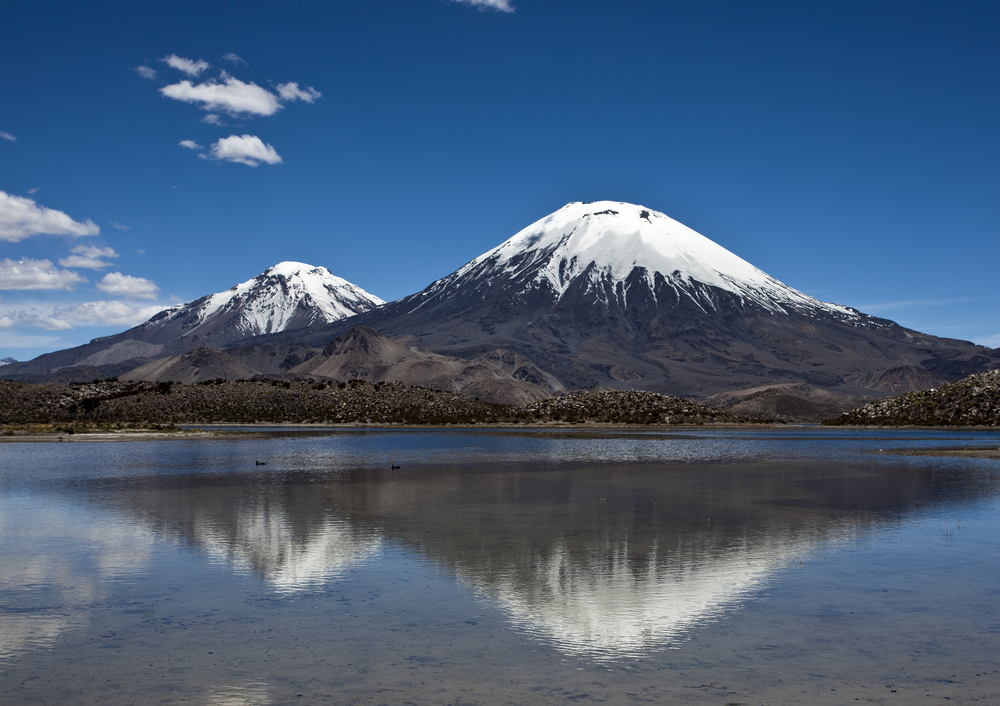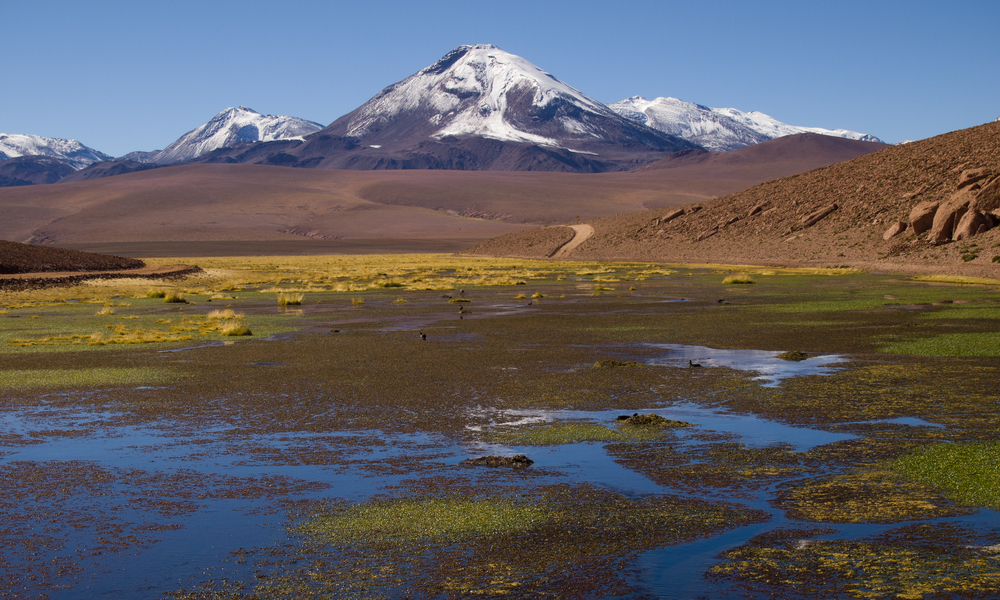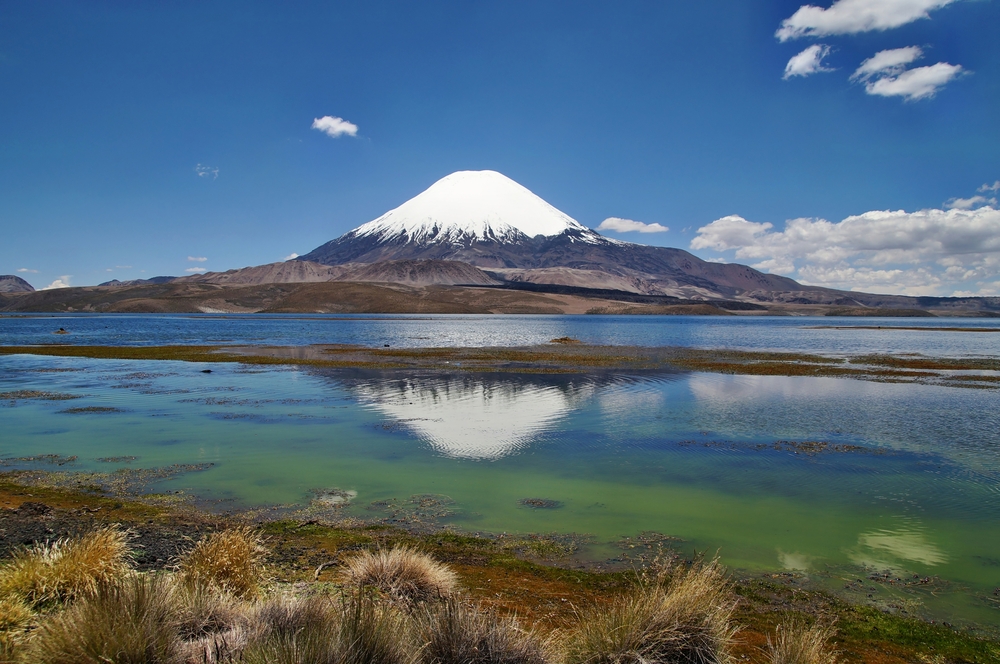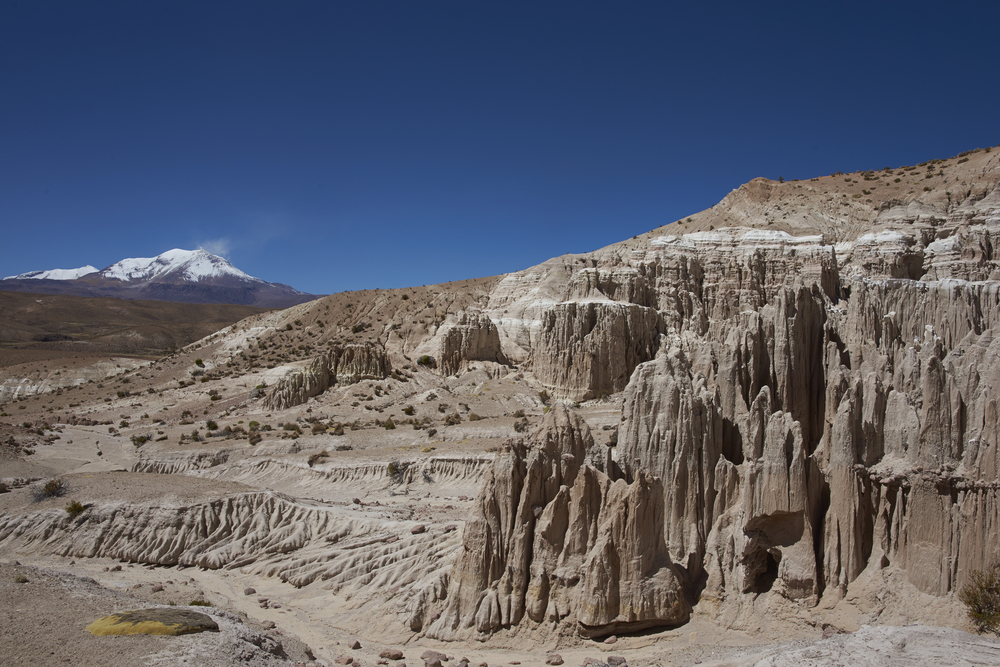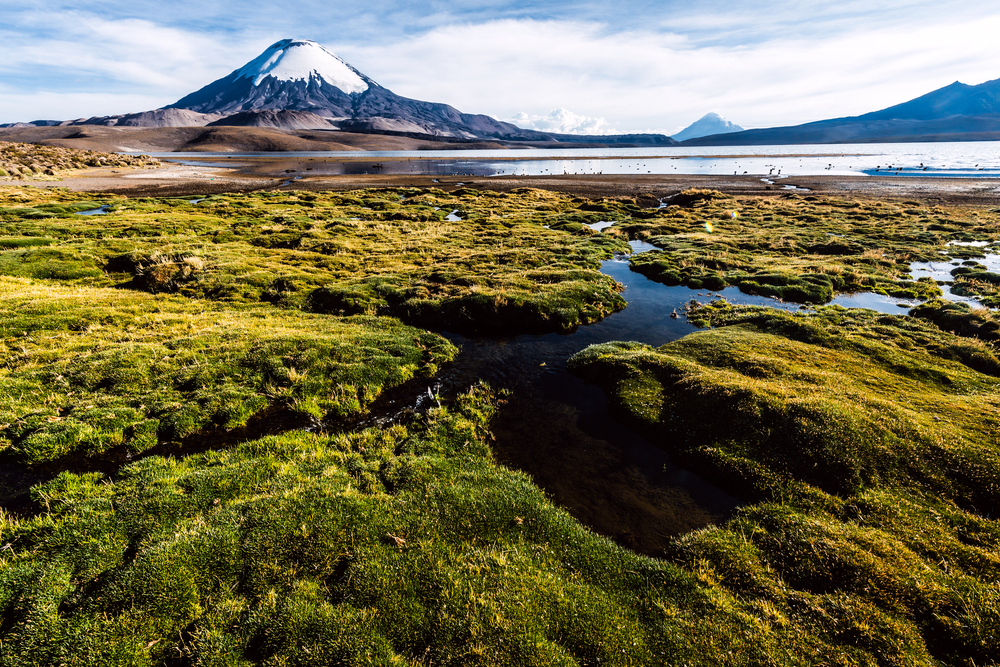Lauca National Park is located in the furtherest northern part of Chile just across the border of Bolivia and neighboring Sajama National Park. The park encompasses an area of 532 square miles (1,379 sq km).
The Bolivia-Chile Payachata volcanic group along with Guallatiri and Acotango volcanoes serve as the foundation of the national park creating striking panoramic landscapes. Accordingly, volcanic calderas, lava fields, and lakes have added to the interest and intrigue of the park.
Lake Chungara and Lake Cotacotani are located in the central part of the park. The lakes are located at an altitude of over 14,800 feet (4,511 m). These lakes, along with Lauca River and Lluta River create a variety of waterways for the aquatic enthusiasts.
The park is situated amongst the Andean Mountains which represent the longest continental mountain range in the world. The leading volcanoes are over 19,000 feet (5,791 m).
The cougar sits atop the food chain and is one of the most coveted wildlife sightings. Other mammals include alpaca, guanaco, llama, taruca, and vicuna. Bird watchers gravitate to Lauca with over 140 species of bird that nest or migrate through the park creating one of the leading birding watching destinations in the country. The Chilean flamingo, Andean condor, and Andean goose are some of the hopeful sightings.
Photos
Things to See
Lauca National Park Trails
Hiking and trekking are the most commonly experienced activities of the park. It is one of the best ways to experience this world biosphere reserve. Because of the altitude and elevation gain, most trails are rated moderate to more challenging.
Park Protection
Lauca National Park was created to protect the lacustrine region and the puna ecoregion of the park. This region of Chile is one of the most coveted for the variety of bird species that nest among the parks border. The park also protects the vegetationa and habitat of the varied wildlife living in the area.
Sources
- Go Chile, Lauca National Park, https://www.gochile.cl/en/lauca-national-park/, retrieved January 2022.
- LAC Geo, Lauca National Park and Biosphere Reserve, https://lacgeo.com/lauca-national-park-biosphere-reserve-chile, retrieved January 2022.
- Visit Chile, Lauca National park, https://www.visitchile.com/en/lauca-national-park/, retrieved January 2022.
- Wikipedia, Lauca National park, https://en.wikipedia.org/wiki/Lauca_National_Park, retrieved January 2022.
- World Atlas, Lauca National Park Chile, https://www.worldatlas.com/articles/lauca-national-park-of-chile.html, retrieved January 2022.
